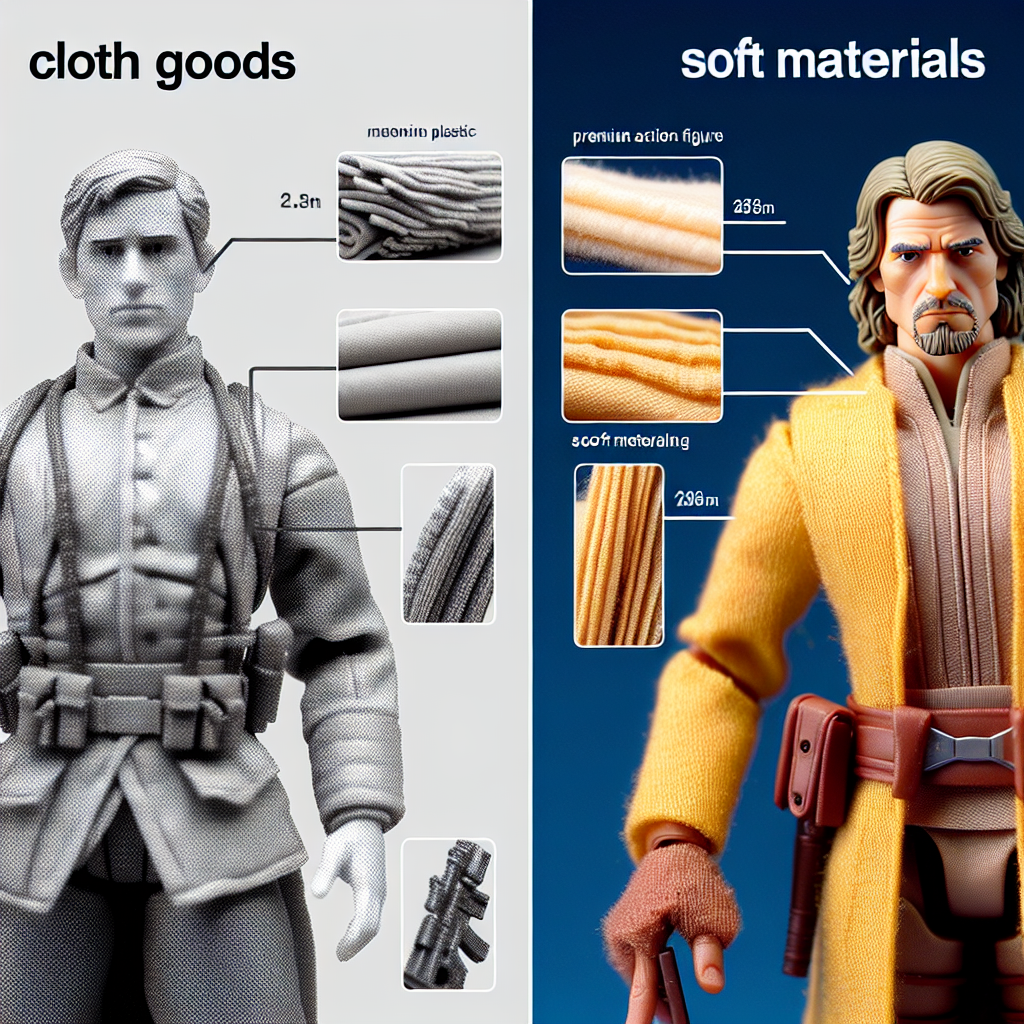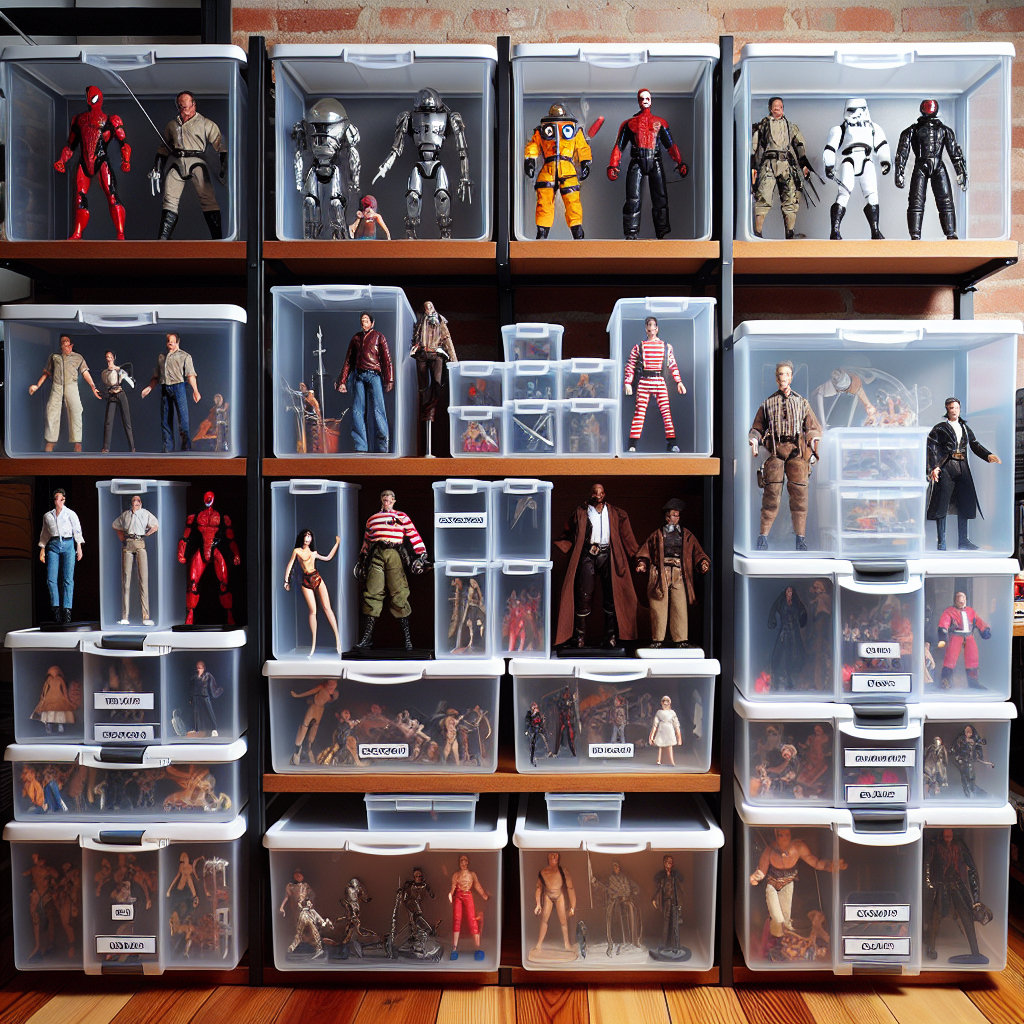The Evolution of Cloth Goods and Soft Materials in Premium Action Figures
For collectors and enthusiasts alike, action figures are more than just toys; they are cherished pieces of art that reflect the creativity and innovation of the toy industry. One key aspect that has dramatically transformed the quality and appearance of these figures over the years is the use of soft goods. Soft goods, including cloth capes, fabric outfits, and intricate tailoring, have elevated the overall aesthetic and appeal of premium action figures. In this blog post, we will delve into the evolution of these materials in action figures and their impact on collectors’ experiences.
What Are Soft Goods?
Soft goods refer to any component of an action figure crafted from fabric or other flexible materials. Unlike molded plastic parts, soft goods provide additional texture, realism, and articulation, enhancing the display and playability of action figures. This category encompasses everything from little accessory elements to full outfits and capes.
The Early Years: Limited Use of Cloth
- In the early days of action figures, particularly during the 1960s and 1970s, soft goods were rarely utilized.
- Figures mostly featured molded plastic accessories and rigid features that could not mimic realistic clothing.
- When soft goods were used, they were often basic and lacked the fine tailoring or details that modern collectors expect.
During this period, the focus was primarily on articulation and the action features of the figures. Collectors were mostly enamored with the characters they represented rather than their construction quality.
The Rise of Soft Goods in The 1980s and 1990s
As the action figure industry grew, so did the use of soft goods. The 1980s introduced a new wave of popularity for superheroes and fantasy characters, and manufacturers began experimenting more with fabric. Soft goods like cloth capes became a symbol of authenticity for many iconic characters.
- Figures like Batman from various lines featured detailed fabric capes, allowing for a more dynamic appearance.
- Star Wars action figures also saw the addition of cloth elements, such as robes and ponchos, adding a layer of authenticity to the storytelling.
This era marked the beginning of an appreciation for finer detailing and more realistic tailoring in action figures. The incorporation of soft goods not only improved the visual appeal but also made play experiences more immersive for children.
The Golden Age of Fabric: Modern Collectibles
Fast forward to the 2000s and beyond, and the action figure market witnessed a renaissance in the use of fabric and soft goods. With the rise of collector-focused brands such as Hot Toys and Mezco Toyz, high-end figures began to showcase exceptional craftsmanship, including detailed tailoring, intricate stitching, and the usage of high-quality fabrics.
- Today’s figures often include soft goods that have been tailored to fit the character precisely, offering a remarkable level of realism.
- Techniques such as dye-sublimation and precision fabric cutting allow for intricate patterns and designs, elevating costume accuracy.
Moreover, brands are now able to capture the essence of characters in a way that was previously unimaginable, providing fans with not just figures, but collectible pieces of art.
Why Soft Goods Matter
The significance of soft goods in action figures extends beyond just aesthetics. They play a crucial role in how collectors perceive value and craftsmanship. The ability to mix and match fabrics allows for greater customization. Many collectors enjoy creating unique displays with their figures by swapping out soft goods from different lines. This adds a level of personalization that appeals to a vast audience.
Moreover, cloth capes and tailored outfits are often more appealing for display purposes. The movement and flow of fabric can create more dynamic visual storytelling, as opposed to rigid plastic that can look static.
The Future of Soft Goods in Action Figures
As we look toward the future, the evolution of soft goods in action figures seems poised to continue. Advancements in technology may lead to even more sophisticated materials and techniques, making it easier for manufacturers to achieve intricate designs and superior quality.
- We may see new innovations in fabric that incorporate smart technology for even more interactive experiences.
- The rise of 3D printing technology could also lead to greater customization opportunities, transforming how soft goods are designed.
This evolution not only underscores the creative possibilities within the industry but also highlights the ever-growing connection between collectors and the products they cherish.
Conclusion
The integration of soft goods, such as cloth capes and tailored outfits, has profoundly influenced the world of premium action figures. From the early days of limited fabric use to the modern era of intricate tailoring and realistic elements, these materials have enhanced the quality, appeal, and playability of action figures. As the industry continues to evolve, so too will the potential for soft goods to elevate the collector experience, making each piece not just a figure, but a keepsake of a beloved character’s legacy.
Whether you’re a seasoned collector or a casual enthusiast, the evolution of soft goods in action figures is a testament to creativity and craftsmanship in the toy industry. As we celebrate this ongoing journey, be sure to keep an eye out for the next wave of innovations that will change the face of action figures once again.




